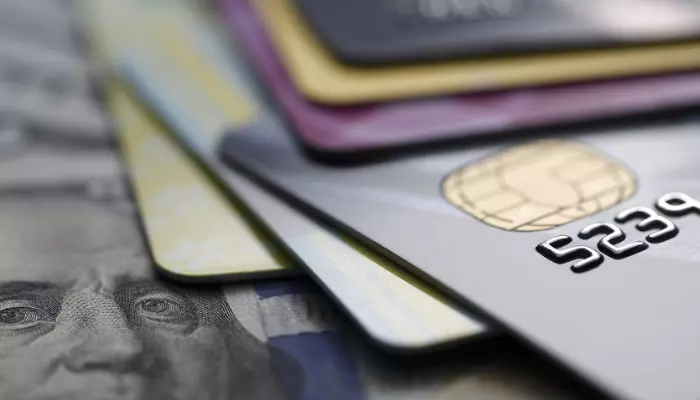
The Fed sedang bergelut untuk mengawal inflasi, dengan pasaran menjangkakan kenaikan kadar 50 mata asas pada mesyuarat Jun untuk kali ketiga sejak Mac tahun ini. Itu akan meletakkan kadar sasaran dalam julat 1.25% hingga 1.5%.
Dan ia tidak kelihatan seperti Fed akan berhenti di situ. Dalam satu kenyataan yang dikeluarkan bersama mesyuarat Mei, jawatankuasa penetapan kadar Fed menyatakan bahawa ia menjangkakan "kenaikan berterusan dalam kadar sasaran adalah wajar." Pakar ekonomi perbankan yang ditinjau oleh Persatuan Bank-bank Amerika menjangkakan Fed akan menaikkan kadar lagi sebanyak 100 mata asas pada mesyuaratnya selepas Jun. Itu akan mengekalkan kadar dasar dalam julat 2.25% hingga 2.5% menjelang akhir tahun.
Kesan daripada tindakan Fed boleh meresap kepada pemegang kad kredit. Anda harus bersedia untuk dek berubah anda berkembang.
Tindakan Fed adalah bertujuan untuk menangani inflasi yang telah muncul berikutan wabak itu. Dengan gangguan rantaian bekalan dan usaha menyelamat semasa wabak, serta akibat daripada perang di Ukraine (yang telah menjejaskan harga minyak dan komoditi lain) dan meningkatkan inflasi, Fed kini menumpukan pada menaikkan kadar sasarannya untuk memerangi kesan semua inflasi yang berterusan ini.
Akibat sokongan pandemik?
Apabila wabak koronavirus 2020 muncul, Fed mula memantau keadaan dengan teliti. Ia membuat dua pemotongan kadar di luar mesyuarat yang dijadualkan pada Mac, mengurangkan kadar sasaran sebanyak 1.5 mata peratusan kepada 0% secara berkesan.
Apabila krisis pulih, kadar yang rendah itu seharusnya meningkatkan penggunaan dan pelaburan perniagaan untuk mengekalkan ekonomi.
Fed juga mengambil bahagian untuk membeli sekuriti bersandarkan gadai janji dan bon kerajaan, yang juga menyebabkan wang dipam ke dalam ekonomi dan menurunkan kadar faedah. Ia juga mengambil langkah tambahan untuk mencegah pembekuan pasaran kewangan.
Kini, sebagai sebahagian daripada apa yang dipanggil pengetatan kuantitatif, Fed juga telah mula mengecilkan kunci kira-kira sekuriti yang dibeli secara beransur-ansur. Tindakan ini akan menyedut wang daripada ekonomi dan seterusnya menyokong agenda Fed dengan menaikkan kadar faedah apabila bekalan wang semakin berkurangan.
Ketua Pegawai Eksekutif JPMorgan Chase Jamie Dimon nampaknya bimbang tentang kesan daripada penjualan kunci kira-kira Fed.
Oleh kerana syarikat-syarikat ini telah menjadi pembeli terbesar bon kerajaan semasa krisis ini, Dimon bersiap sedia untuk menghadapi sedikit ketidaktentuan kali ini apabila Fed menjual sekuriti tersebut. Satu lagi isu untuk Dimon ialah kesan perang Ukraine terhadap harga minyak dan komoditi.
Pekerjaan dan Sasaran Inflasi
Tindakan Fed dipandu oleh mandat dwi mengurus pekerjaan dan inflasi dalam ekonomi (untuk mencapai kestabilan harga). Matlamat mereka adalah untuk memaksimumkan guna tenaga dan mengekalkan inflasi pada 2% dalam jangka masa panjang.
Ekonomi AS menambah 390,000 pekerjaan sehingga Mei, dengan kadar pengangguran 3.6%. Dari segi positif, pertumbuhan gaji telah perlahan dari paras April, banyak melegakan Fed.
Pada tahun 2020, sebagai sebahagian daripada sasaran inflasi asimetrinya, Fed memutuskan bahawa ia tidak akan menaikkan kadar sasaran walaupun inflasi melebihi sasaran 2% untuk satu tempoh masa, memandangkan inflasi berada di bawah sasaran 2% ini. tahap selama beberapa tahun.
Ambil kira pengajaran yang diperoleh daripada kemelesetan yang lalu (apabila inflasi tidak meningkat walaupun pekerjaan terus berkembang). The Fed nampaknya tidak mula menaikkan kadar sehingga 2023.
Pegawai Fed sebelum ini melihat inflasi sebagai "sementara" dan tidak mampan. Walau bagaimanapun, dengan inflasi melebihi 7% untuk beberapa bulan, mencapai 8.6% pada bulan Mei, Fed akan terus menaikkan kadar faedah. Dia percaya pasaran pekerjaan boleh menahan kenaikan kadarnya.
Pada tahun 1980, di bawah Pengerusi Rizab Persekutuan Paul Volcker, inflasi mencecah 11%. Dengan itu, tumpuan Fed kini adalah untuk mendahului inflasi sebelum ia tidak terkawal.
Jangkaan inflasi meningkat
Dalam ulasan baru-baru ini, Gabenor Fed Christopher J. Waller berkata beliau melihat jangkaan inflasi jangka panjang meningkat daripada bawah 2% kepada hanya di atas 2%. (Jangkaan inflasi untuk tiga tahun akan datang adalah pada 3.9% pada bulan April, berbanding dengan 3.7% pada bulan Mac, menurut tinjauan pengguna oleh Federal Reserve Bank of New York.) Waller mahu Fed mengurangkan kadar sebanyak 50% untuk beberapa waktu. Sehingga dia melihat inflasi menghampiri sasaran 2% Fed.
Dari segi impak ke atas pekerjaan, Waller berkata kadar kekosongan itu begitu tinggi, walaupun dengan penurunan 2.5 mata peratusan dalam kekosongan akibat Pengetatan Fed, ia akan kekal pada tahap yang sihat pada akhir suku sebelumnya. melihat pengembangan. Awal 2020.
Kesan ke atas kadar faedah kad kredit
Bagi pemegang kad, semua ini bermakna anda mungkin melihat peningkatan dalam kadar kad berubah-ubah. Harga ini terikat dengan harga terbaik yang ada. Kadar penanda aras pula adalah berdasarkan kadar sasaran Fed. Ini bermakna apabila Fed mula menaikkan kadar faedah, kadar faedah juga akan meningkat.
Jika kadar utama meningkat, kadar terapung akan menyusul tidak lama lagi. Malah, kadar kad kredit telah meningkat, dengan purata APR negara pada 16.68% pada awal Jun berbanding 16.34% pada Mac.
Ini bermakna anda harus mula menguruskan baki kad kredit anda dengan lebih strategik. Jika anda mempunyai baki, rancang untuk tunaikannya. Jika anda mempunyai baki dalam tempoh tertentu, anda boleh menukarnya kepada pilihan kadar faedah yang lebih rendah, seperti membayar kad kredit anda dengan pinjaman peribadi jika itu adalah tawaran yang lebih baik untuk anda.
Keputusan akhir
Rizab Persekutuan terus menamatkan dasar monetari longgar yang telah diambilnya untuk menyokong ekonomi semasa pandemik. Pasaran menjangkakan kenaikan 50 mata asas dalam kadar sasaran pada bulan Jun dan kesinambungan siri kenaikan tahun ini. Oleh kerana kadar terapung pada kad kredit terikat pada kadar utama berdasarkan kadar dana persekutuan, pengguna harus bersedia untuk kenaikan kadar berubah.
